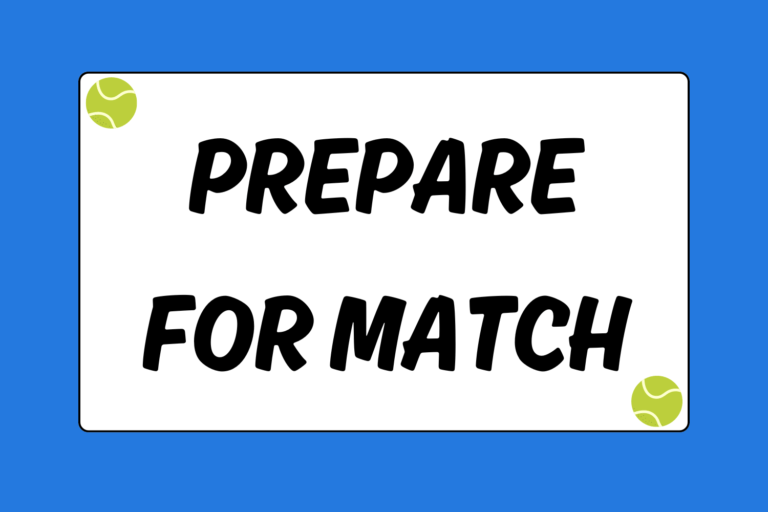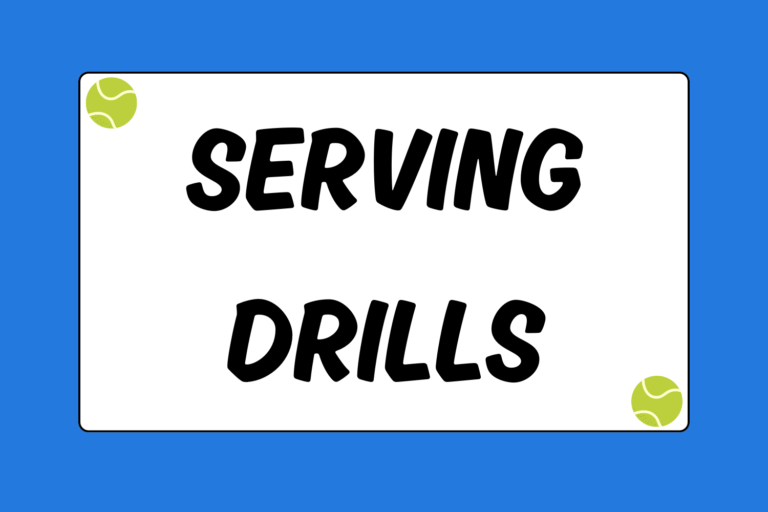Novice tennis players often want to jump straight to serves and groundstrokes on the first day of practice. In doing so, they overlook the importance of footwork. Most professional players and coaches agree that footwork, which involves getting the feet into a position to execute the shot correctly or recover from an opponent’s shot, is the most critical factor in determining a player’s success.
Learning stroke fundamentals, such as how to hit with topspin or serve the ball, is an important part of a tennis player’s growth. However, many athletes would benefit the most by not picking up a racket at all — at least in the early stages of training.
Keep Your Feet Moving
Sluggish footwork is the most widespread problem among developing and struggling tennis players. A player’s feet should never stop moving when the ball is in play, even if the ball is on the other side of the court. It’s impossible to have a quick first step and explode toward the ball if your feet are glued to the ground. Even if your goal is simply to enjoy a friendly rally, proper footwork is necessary for consistently keeping the ball in play.
Here are three exercises that will improve your footwork, anticipation, and court positioning:
1. Jump Rope
Purpose: To improve conditioning, agility, coordination, timing, endurance, and footwork.
Although jumping rope may seem outdated and tedious, the exercise is a simple way to tone muscles in your entire body and improve your footwork. If jumping rope is difficult or does not come naturally at first, then practice and patience will definitely pay dividends.
To begin, make sure you have a flat surface that is shock absorbent, such as a wood floor, gym mat, outdoor track, or tennis court. Softer surfaces are more forgiving on ankles, feet, and joints.
If you are somewhat new to jumping rope, expect some initial frustration. Developing skill with your rope takes willpower and practice, so try to use the rope for short sessions that stress conditioning. For example, start with 20-second intervals on the rope with brief, five-second rests. Eventually, the motion will become more natural and you will be able to perform rounds that last one to three minutes. Once you can jump at this level, a typical routine should include:
- Four sets of jump rope that last two to three minutes apiece.
- Rest for 60 second periods between sets.
2. Split Step
Purpose: To improve your anticipation, first step, and overall court agility.
The split step is one of the most basic and essential tennis maneuvers. Without proper form, a player can be left out of position and incapable of hitting the ball with any accuracy or force.
The split step is performed when you jump up an inch or two off the ground and land on your toes when the opponent is about to hit the ball. Your feet should be about shoulder-width apart, and your knees should be slightly bent when you land, leaving you in a position to move quickly and spring toward the ball.
A simple way to practice split steps on your own is to stress lateral movement while imitating a game situation.
Split Step Drill
Follow these instructions to complete the split step drill:
- Stand at the center of the baseline, facing the net, and split step.
- Be sure to concentrate on staying balanced when you split step.
- Once you land on the ground, run to the corner of the doubles alley on the forehand side, and then slide step back to the center of the court.
- Once you are back to the center, split step again and run to your backhand side, touch the corner of the doubles alley, and return to the center.
- Repeat this exercise and complete three sets that last three minutes each.
- Rest 60 seconds between sets.
This exercise improves conditioning and agility, but it also teaches the proper ready position. Repeatedly emphasizing how to split step translates into a match situation, and will increase your preparation and ability to consistently hit the ball over the net.
Without an adequate split step, you will be out of position and the ball will generally end up too close to your hands or sail out of reach. It’s extremely difficult to make contact on the sweet spot of the racket and maintain a rally if your arms aren’t fully extended.
3. Agility Ladder
Purpose: Improve body control, foot speed, and conditioning.
Like jumping rope, it may take some practice before you can master the ladder. Try going through the following exercise slowly to get the general ability and movement developed. Ladder drills stress proper form and focus on technique rather than leaving you exhausted and out of breath. So take your time to learn how to move through the rungs.
There are hundreds of different ladder drills you can incorporate to enhance your footwork on the court. Tennis demands a lot of lateral movement, so you should emphasize agility-based drills when using a ladder.
Hot Tip: Train in Your Backyard
Agility ladders are sold in many different varieties, like bungee cords for high-stepping or rope ladders for indoor and outdoor training. However, if you want to save some money or practice at home, just buy some chalk and make your own! Design your own ladder that has anywhere from 9 to 18 rungs that are 15-inches long by 20-inches wide. With a ladder like this, you can practice in your backyard or driveway.
General Tips
Keep in mind the following suggestions during this drill:
- Stand with your feet hip-width apart.
- Push off from the balls of your feet rather than your toes. This will help create more stability and thrust.
- Your hands should be active. Pump your hands from shoulder-height to your hips.
- Keep your elbows close to your body and at a 90-degree angle at all times.
- Always keep your head up, like you would if you were chasing down a tennis ball.
Lateral-Movement Drill
The following drill mimics the type of footwork you need during a match:
- Start at the left side of the ladder, with both feet outside of the left square.
- Step into the left square with your left foot first, then your right foot in a 1-2 motion.
- Step into the right square, outside of the first square, again with your left foot first and right foot second.
- Now step diagonally into the left square on the second row, with the left foot first in the same 1-2 motion.
- Repeat the steps for the entire length of the ladder.
- Repeat the exercise when you reach the end of the ladder, but switch your lead foot.
- Complete at least three sets, going in both directions, with a 20-second break in between each set.
Ready to Hit
Whether you’re a novice, high school, or professional player, these essential exercises will improve your conditioning, agility, and readiness. Additionally, all of these drills mimic the type of movement you use in a match, so the exercises will help you move around the court more naturally.
While it may seem normal to start swinging a racket the minute you walk on the court, spending at least 25 minutes on footwork training will undoubtedly have a more significant and lasting impact on your overall game!





